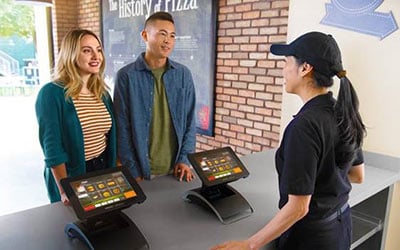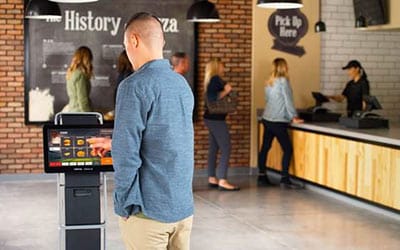
Sports fans have had it with long concession wait times and are willing to pay for more modern conveniences and experiences shows a new global study from Oracle Food and Beverage. Nearly all—94 percent—of respondents noted they buy food and beverages while at sporting events and 58 percent said they would spend even more if they didn’t have to wait in lines. Seventy-six percent added that in-seat delivery would improve their stadium experience.
the full Stadium of the Future report
“There is nothing more frustrating for sports goers than missing part of the game while they wait for a hot dog and beer,” said Simon de Montfort Walker, executive vice president and general manager, Oracle Food and Beverage. “Stadiums must modernize the ordering and delivery of food and beverages to improve the experience and keep fans coming back. The survey shows that fans are amazingly tech-savvy and expect to bring the same conveniences they have in their everyday lives—self ordering, food delivery, mobile payments, etc. —to their favorite sporting venues.”
Modern Technology Scores with Fans
The sports industry is fast-paced and stadiums need to keep up with the growing demands of their extremely loyal fan base. The survey showed that when it comes to food and beverages, fans would welcome self-ordering from kiosks and mobile apps to speed the process. And much like they have come to expect from emerging food delivery services—they want the food to be delivered to them in their seat, so they spend their time watching the game. And, they expect all this to be paid for via the click of a button, via cashless or modern payment systems or loaded tickets.

While fans were also open to AR/VR to view menus and for drone food delivery, they drew the line at robots delivering their food. Sixty-three percent of fans were also interested in joining a loyalty program to get even more benefit from the game-day outing.
“Venues can no longer think of game-day as a moment in time,” added de Montfort Walker. “It’s an opportunity to engage fans before, during, and after a game in an easy and seamless manner for a fan. For example, loyalty programs members may receive a coupon for a $1 hot dog during the seventh inning stretch at a baseball game or free wings at a venue owned restaurant outside the stadium after a game. It’s a win-win that rewards the fan and helps the venue move product and increase revenue.”
The study of over 2000 sports fans from the U.S., UK, Germany, Australia and Canada, highlighted what fans expect from their game-day experience:
- To enjoy food and drink: Seventy-two percent of US fans always or usually purchase food at a game while 76 percent buy a beverage, spending an average of $42 per game. Australia fans spent an average of $34 per game and Canada, $33. The total for the UK and Germany combined was €30.
- To stay in their seats: Nearly 30 percent of fans globally ranked being able to stay in their seats as the most important way to improve the food and beverage experience at the stadium.
- Shorter wait times: Fifty-nine percent of fans would spend more on concessions if their wait time were cut in half. In fact, 10 minutes was the maximum acceptable wait time to buy food and drinks according to those surveyed which is why 74 percent said they would like to pick up an order from an express line at a concession stand if offered.
- Easier ordering options: Sixty-eight percent were highly interested in using a mobile application to order food and beverage, and 63 percent said they would use a self-service kiosk, mobile app or tablet for purchases.
- Futurist technology that doesn’t disrupt the game: Fans are already using paperless tickets and contactless payments, but are less interested in too-futuristic technology. For example, 95 percent of fans were not interested in receiving an order from a robot but 41 percent said they would be likely to use drone delivery or voice activated virtual assistants. Thirty-seven percent would use augmented reality to see food options.
- Loyalty rewards: Fans globally are interested in joining a loyalty rewards program with Germany and the US leading the way at 70 percent and 69 percent. However, less than 4 percent actually participate in these programs in the US and 1 percent in Canada, showing that more needs to be done to engage the fans and make it worth their while.
- Mobile conveniences: Cashless payments and paperless tickets proved to go a long way in improving the fan experience for survey respondents.
Methodology

Online surveys were collected using a third party online consumer panel. Respondents met the following requirements as part of the survey screener:
- Avid fan of the target sport
- Attended at least one live sporting event of the target sport in the last 12 months
- Ages 18-64
- In the US, efforts were made to get an even spread across the major sports and types of stadiums.
- Total number of fans surveyed: 401 United States, 401 United Kingdom, 403 Germany, 401 Australia and 402 Canada






